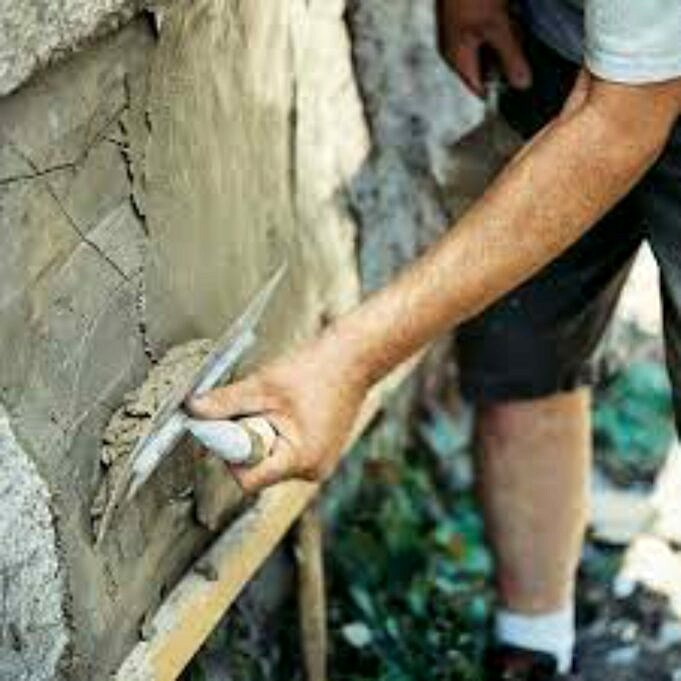Stucco can be used to cover your exterior. Stucco is affordable, easy to apply, and looks great. However, you will need to learn how to cut stucco at some point in your home’s life.
Stucco is a strong exterior covering for your home. However, it can be easily damaged if you don’t know what you are doing. If you use the following tips, you’ll be well on your path to learning how to cut stucco to suit your next project.
What You’ll Need
There are several tools that can be used to cut stucco. To cut stucco cleanly, you will need a diamond or carbide-tipped blade. The first step is to choose the right saw for you.
- Circular saw (great for large areas)
- Angle grinder is great for almost all purposes
- Oscillating tool (great to make smaller cuts or detail work).
- A power drill with a hole saw attachment is great for cutting circular holes.
These supplies will be needed after you have chosen the right saw for the job.
Step 1: Preparing The Area
Preparing the area for cutting is important before you start cutting. Tape painters tape around your hole.
Stucco can be cracked and chipped easily. Taping the perimeter of the stucco will reduce the risk that you cause damage to the stucco around you as you work.
Step II: Getting Your Shop Vac Ready
Toxic dust can be generated by cutting through any type of masonry material. Particularly stucco, which generates tons of dust, can make it difficult to see what you are doing.
You can do this task yourself, but having help and a shop vacuum can make it much easier to see what you are doing.
Even when you use the shop vacuum, there will still be dust. It is important to ensure that both you and your helper have respirators so that they don’t inhale any dust particles.
Before you start, ensure that your shop vacuum’s filter is clean. Otherwise, the vacuum will only pull dust from your work area, and then spit it out.
Your helper should follow you a few inches behind your saw. Point the nozzle towards the area you are cutting. This will eliminate most of the dust from the area and make it easier to see what you are cutting.
Step III: Making The Cut
Now you are ready to start the actual cutting part of the job. The process is the same regardless of what type of saw you use for the job. Depending on which type of saw you are using, here’s what to do.
Circular Saw
For most stucco cutting, a circular saw is the best tool. Although it is not ideal for small cuts or details, it will work well if you are going to cut a large section.
To ensure your safety, don’t forget to wear gloves and safety goggles before you start cutting.
Turn on your circular saw by pushing the blade guard back. Before you start your cut, let the saw reach maximum RPM. Next, take your first plunge with the circular saw.
Slowly and carefully cutting will reduce the chances of cracking or chipping the stucco. Keep cutting until you reach the edge of the area you are cutting. Then, continue to cut the other sides until you have a clean hole.
Angle Grinder
A great tool to cut stucco is an angle grinder. The grinder is powerful enough to make larger cuts but small enough that it can be used for smaller ones.
Before you start cutting, turn on your angle grinder and let it reach maximum RPM. Slowly insert the blade into the surface. Continue working slowly until you have completed the entire cut.
Oscillating Tool
For detail work and smaller cuts, an oscillating tool can be a good option. However, they can clog and may not be the best option for larger jobs.
Use an oscillating tool to turn on the tool and let it reach maximum RPM. Next, slowly and carefully plunge the blade into stucco. You will need to trim around the perimeter of your hole until it is complete.
Use A Hole Saw
A power drill equipped with a hole saw bit can make circular holes in stucco. It may also be the most cost-effective option, depending on what job you are doing.
The first step is to load the bit into your drill. Next, tighten it. Before you begin your cutting, pull the trigger on the drill. To increase precision, I use my free hand as a steadying tool to hold the drill’s body while I cut.
Slowly work through the material until the entire stucco is gone. Then pull back to reveal a perfectly circular hole.
The Final Word
It is important to learn how to cut stucco. This will be a valuable lesson for DIYers in the future. Although cutting stucco can seem daunting at first, there are many ways to achieve great results.
No matter what method you use, it is important to take your time and avoid any damage.



